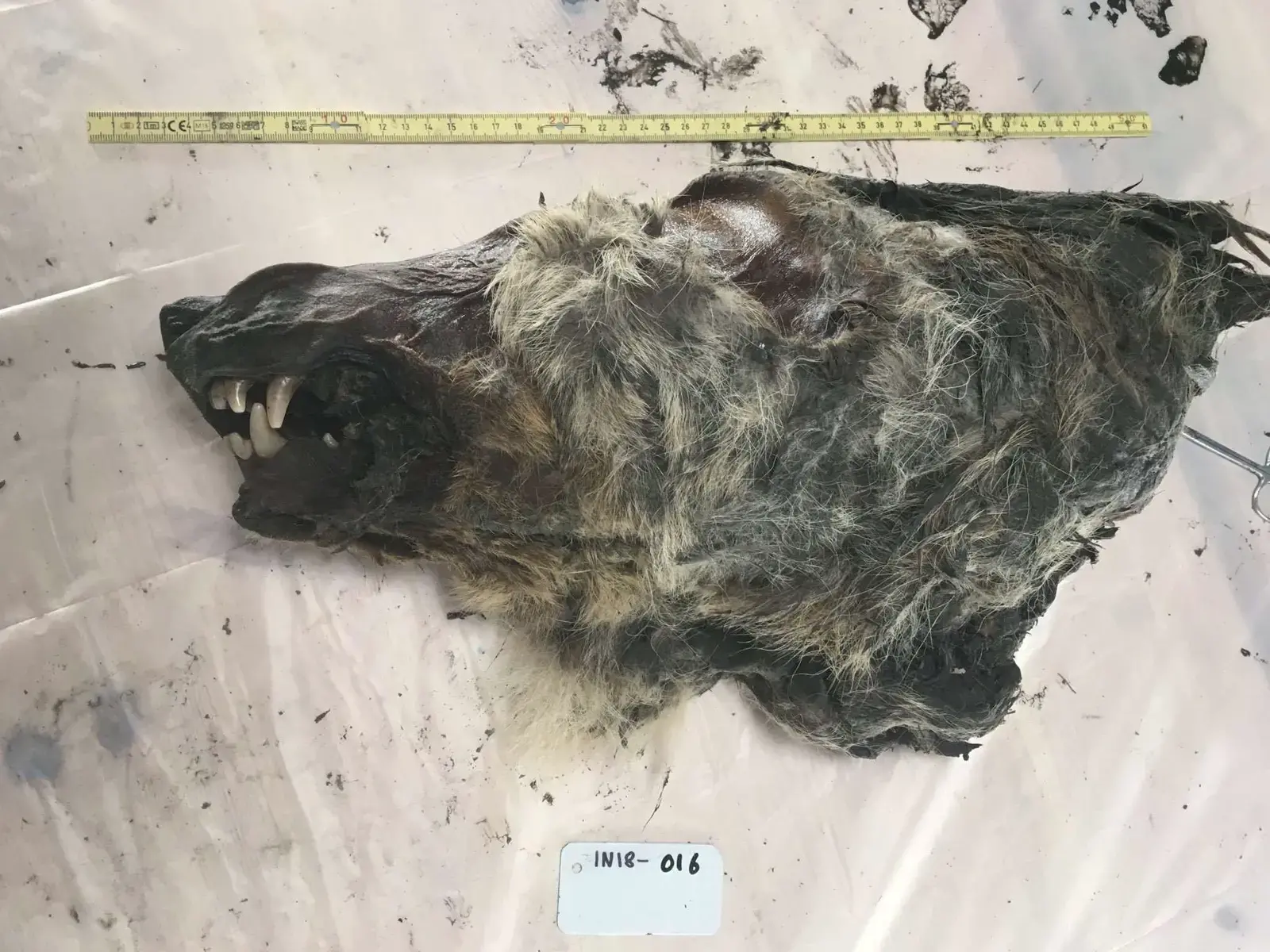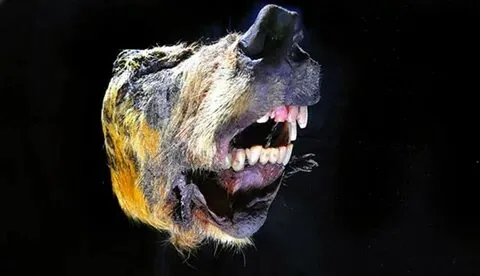Siberia’s 32,000-Year-Old Wolf: Permafrost’s Gift
The earth continually reveals its ancient secrets, offering us glimpses into the lives of creatures that roamed the planet thousands of years ago. Among these fascinating discoveries was the 2018 unearthing of a completely intact prehistoric wolf head, found by a mammoth tusk hunter on the banks of the Tirekhtyak River in the Yakutia region of Siberia. This find, preserved for 32,000 years in permafrost, is not only a marvel of preservation but a treasure trove of potential genetic information that could reshape our understanding of prehistoric life.
An extraordinary find

The specimen is the first (partial) carcass of an adult Pleistocene steppe wolf, an extinct lineage distinct from modern wolves, ever found.
The discovery of the wolf head is significant as it provides an unprecedented look at the Pleistocene steppe wolf, an extinct lineage separate from modern wolves. The preservation of the specimen allows scientists to study it in remarkable detail, including its fur, fangs and snout, which remain intact. The head, measuring 15.7 inches long, is noticeably larger than that of a modern gray wolf, which ranges from 9.1 to 11 inches.
Genetic sequencing and research objectives.
Researchers are particularly excited by the prospect of extracting viable DNA from the wolf’s head. David Stanton, a researcher at the Swedish Museum of Natural History, is leading the genetic examination of the bones. The goal is to sequence the wolf’s genome, which could reveal whether ancient wolves mated with modern ones, the degree of inbreeding in the ancient species, and any genetic adaptations that may have contributed to their extinction.
Debates and theories

This is a unique discovery of the first remains of an adult Pleistocene wolf with its tissue preserved.
There is an ongoing debate about how the wolf’s head became detached from its body. Tori Herridge, an evolutionary biologist at the Natural History Museum in London, and Dan Fisher of the University of Michigan, suggest that scans of the head could show evidence that humans deliberately severed it. This theory, if proven, would provide a unique example of human interaction with carnivores from that period. However, others, including evolutionary geneticist Love Dalén, remain skeptical, citing natural causes such as scavenging or permafrost movements as possible reasons for the head’s separation.
Broader implications
The discovery adds to a growing list of well-preserved prehistoric creatures found in Siberian permafrost, including a 42,000-year-old foal, a cave lion cub and even a feathered Ice Age bird. These finds are attributed to increased hunting for mammoth tusks and melting permafrost linked to global warming. As the climate warms, more ancient specimens are likely to be discovered, offering more opportunities for scientific study.

Computed tomography of the wolf’s head. Photos.
Challenges and future prospects
While thawing permafrost may reveal more prehistoric specimens, it also poses the risk of decay before these finds can be studied. Stanton stresses the urgency of discovering and preserving these specimens before they are lost forever. The involvement of a mammoth tusk hunter in the discovery highlights the often serendipitous nature of such finds, adding an element of excitement and unpredictability to the field of paleontology.

The 32,000-year-old wolf head discovered in Siberia is a remarkable window into the past, offering scientists the opportunity to study a long-extinct species in unprecedented detail. As researchers work to uncover the genetic secrets held within this ancient specimen, they may discover new information about the lives of prehistoric wolves and their interactions with early humans. This discovery, along with others emerging from thawing permafrost, underscores the dynamic and ever-evolving nature of our understanding of Earth’s history. The potential for future finds promises to keep the fields of paleontology and archaeology at the forefront of scientific discovery.






